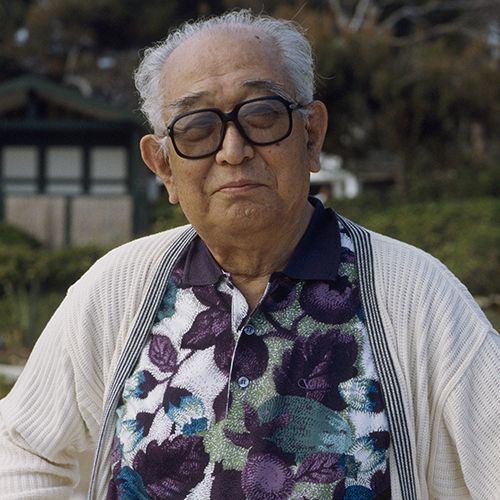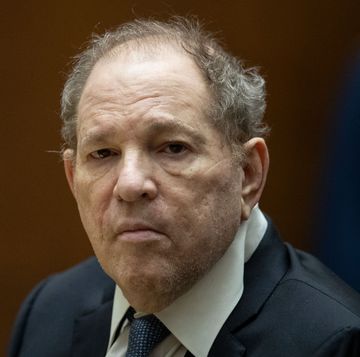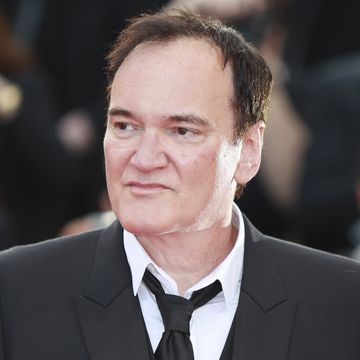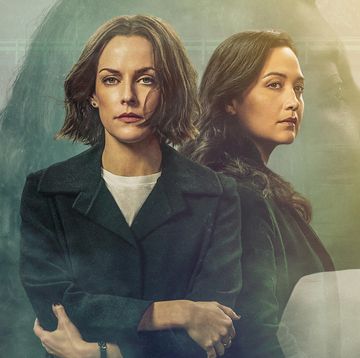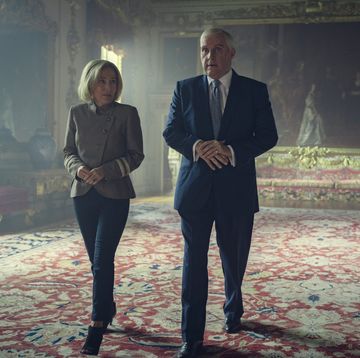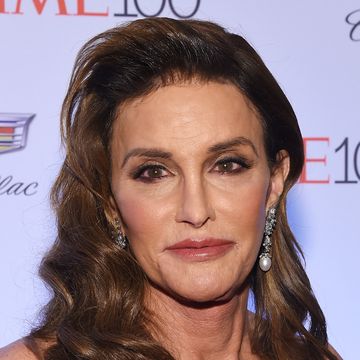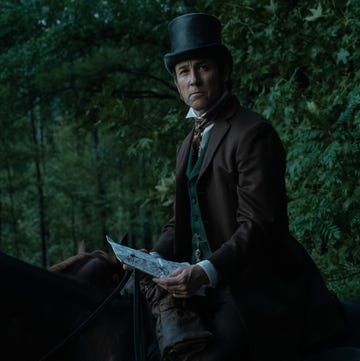(1910-1998)
Who Was Akira Kurosawa?
Filmmaker Akira Kurosawa began his career as an assistant director in the years leading up to World War II. In 1950, he gained international acclaim for the samurai tale Rashomon, which he followed with such influential films as The Seven Samurai, Throne of Blood and Yojimbo. After a difficult period during which he failed to find backing for his projects and also attempted suicide, his influence on a younger generation of directors led to the resurrection of his career with the films Kagemusha and Ran. Kurosawa died in 1998, leaving behind an impressive body of work that has earned him a place as one of the greatest filmmakers of the 20th century.
Early Life
Kurosawa was born in Tokyo on March 23, 1910. His well-to-do family can trace its lineage as far back as the 11th century, and the young Kurosawa was taught early on that he was a descendant of samurai. But despite this esteemed, distinctly Japanese background, Kurosawa’s father believed he and his siblings should be exposed to Western culture as well, so he frequently took them to see films.
Initially, Kurosawa found himself drawn to art; after finishing high school, he studied at the Doshisha School of Western Painting. However, in 1936, his essay application to work at the Photo Chemical Laboratories film studio caught the eye of Kajirō Yamamoto, one of Japan’s biggest director’s at that time, who insisted on hiring Kurosawa. Employed as an assistant director for the next seven years, Kurosawa made about 24 films with Yamamoto and other directors, and learned, in particular, the importance of being able to write a good script.
Rising Sun
Because he had been labeled unfit for military service after failing an earlier physical, when Japan entered World War II Kurosawa was able to stay in Tokyo and continue to work. Despite the inherent economic hardships of the conflict, it was during this time that Kurosawa was promoted to director and made his first film, Sanshiro Sugata. A martial arts picture set in 19th-century Japan, it was released in 1943 and showcased Kurosawa’s talents as both a writer and director. Kurosawa followed with the World War II–themed Ichiban utsukushiku in 1944, an achievement made even sweeter when he married its star, Yōko Yaguchi, the next year.
For a brief period after the war’s end, Kurosawa’s budding career was placed on hold by the occupying U.S. forces, but he returned to filmmaking with his own criticism of Japan’s pre-war militarism, No Regrets for Our Youth in 1946. Two years later, he made his first significant breakthrough with Drunken Angel, a melodrama set in post-war Tokyo that not only demonstrated Kurosawa’s range, but also marked his first collaboration with actor Toshirō Mifune.
The International
Kurosawa followed his first domestic success with what would become his first international hit, Rashomon (1950), a samurai murder story told from the perspective of four different characters. It is now considered a masterfully innovative storytelling device for the time, but it was met with mixed reactions in Japan. However, its genius was not lost on the international circuit and it won both the Venice Film Festival’s top prize and the Academy Award for best foreign film. Working from a script by Kurosawa, Martin Ritt remade it as the 1964 Western The Outrage. It became the earliest of many of Kurosawa’s works adapted to this genre.
Now recognized as an important voice in cinema, over the course of the next decade, Kurosawa made some of his most influential and entertaining films. In 1952, he released the internationally acclaimed Ikiru and in 1954, he released the epic Seven Samurai, a homage to Westerns that would later come full circle when it was remade as The Magnificent Seven (1960). Once more demonstrating his range and flair for adaptation, in 1957, Kurosawa released Throne of Blood. A reimagining of Macbeth, it is widely considered to be one of the finest interpretations of Shakespeare’s works. Following on its heels was 1958's Hidden Fortress, the story of princess, her general and their two bumbling peasant companions on a quest to reach home. It marked a milestone as the first film in Japan to make use of the widescreen format, but it is arguably even more important for the influence it had on the young American filmmaker George Lucas, who names Hidden Fortress as a primary influence for Star Wars.
Dark Clouds
To gain greater artistic freedom in his work, in 1960, Kurosawa started his own production company. His first film from this new venture was Yojimbo (1961), which follows a nameless wandering samurai as he plays the middle between the two warring factions in a small town. Among his most popular and accessible films, Sergio Leone remade it as A Fistful of Dollars (1964), with Clint Eastwood starring as the archetypal “Man with No Name.”
However, despite Kurosawa’s continued successes, television’s negative impact on filmmaking and an economic depression in Japan led him to seek work in Hollywood. Unfortunately, none of his projects there came to fruition. His thriller Runaway Train failed to gain financial backing and personal differences caused Twentieth Century Fox to fire him from the Pearl Harbor film Tora! Tora! Tora! Compounding Kurosawa’s disappointment was the commercial failure of his 1970 comedy, Dodes’ka-den. Dejected, exhausted and suffering financially, Kurosawa attempted suicide in 1971. Although he eventually recovered, he resigned himself to the fact that he would never direct again.
Resurrection
On the verge of fading into obscurity, Kurosawa was approached by a Russian production company to make the adventure epic Dersu Uzala about a hermit. Shot on location in Siberia and premiering in 1975, international audiences enthusiastically received the film. However, the production took a toll on Kurosawa’s health. Although he was finding it increasingly difficult to win backing for his projects, Kurosawa persevered in his efforts to bring his vision to the screen.
For all that Kurosawa had contributed to the world of cinema, it is fitting that his profound influence would someday repaid. In the late 1970s, Kurosawa admirer Lucas leveraged his massive success with Star Wars to bring Francis Ford Coppola and Twentieth Century Fox on board to produce Kagemusha, a medieval samurai story of epic proportions. Released in 1980, it won the Grand Prize at Cannes and was nominated for best foreign language film at the Academy Awards. Reinvigorated by the success of Kagemusha, Kurosawa followed it up in 1985 with Ran, his samurai adaptation of Shakespeare’s King Lear.
'Dreams' and Death
In 1990, the 80-year-old director returned with Dreams, an experimental offering brought to the screen with help from yet another of his admirers, Steven Spielberg. Though the film met with a lukewarm reception, at that year’s Academy Awards Spielberg and Lucas presented Kurosawa with an honorary Oscar by in recognition of his body of work.
The director made the mildly successful Rhapsody in August in 1990 and Madadayo in 1993. In 1995, he was working on his next project when he fell and broke his back. The injuries he sustained confined him to a wheelchair for the remainder of life and led to a rapid deterioration of his health. He died from a stroke on September 6, 1998, in Tokyo. He was 88. Since his passing, his impact on film continues to be felt through new interpretations of his work and the lasting influence he has had on some of the industry’s brightest lights.
QUICK FACTS
- Birth Year: 1910
- Birth date: March 23, 1910
- Birth City: Tokyo
- Birth Country: Japan
- Gender: Male
- Best Known For: Japanese filmmaker Akira Kurosawa won international acclaim with such films as 'Rashomon' (1950), 'Ikiru' (1952) and 'Ran' (1985).
- Astrological Sign: Aries
- Nacionalities
- Japanese
- Death Year: 1998
- Death date: September 6, 1998
- Death City: Tokyo
- Death Country: Japan
Fact Check
We strive for accuracy and fairness.If you see something that doesn't look right,contact us!
CITATION INFORMATION
- Article Title: Akira Kurosawa Biography
- Author: Biography.com Editors
- Website Name: The Biography.com website
- Url: https://www.biography.com/movies-tv/akira-kurosawa
- Access Date:
- Publisher: A&E; Television Networks
- Last Updated: April 14, 2021
- Original Published Date: April 2, 2014
QUOTES
- For me, filmmaking combines everything. That’s the reason I’ve made cinema my life’s work. In films, painting and literature, theatre and music come together. But a film is still a film.
